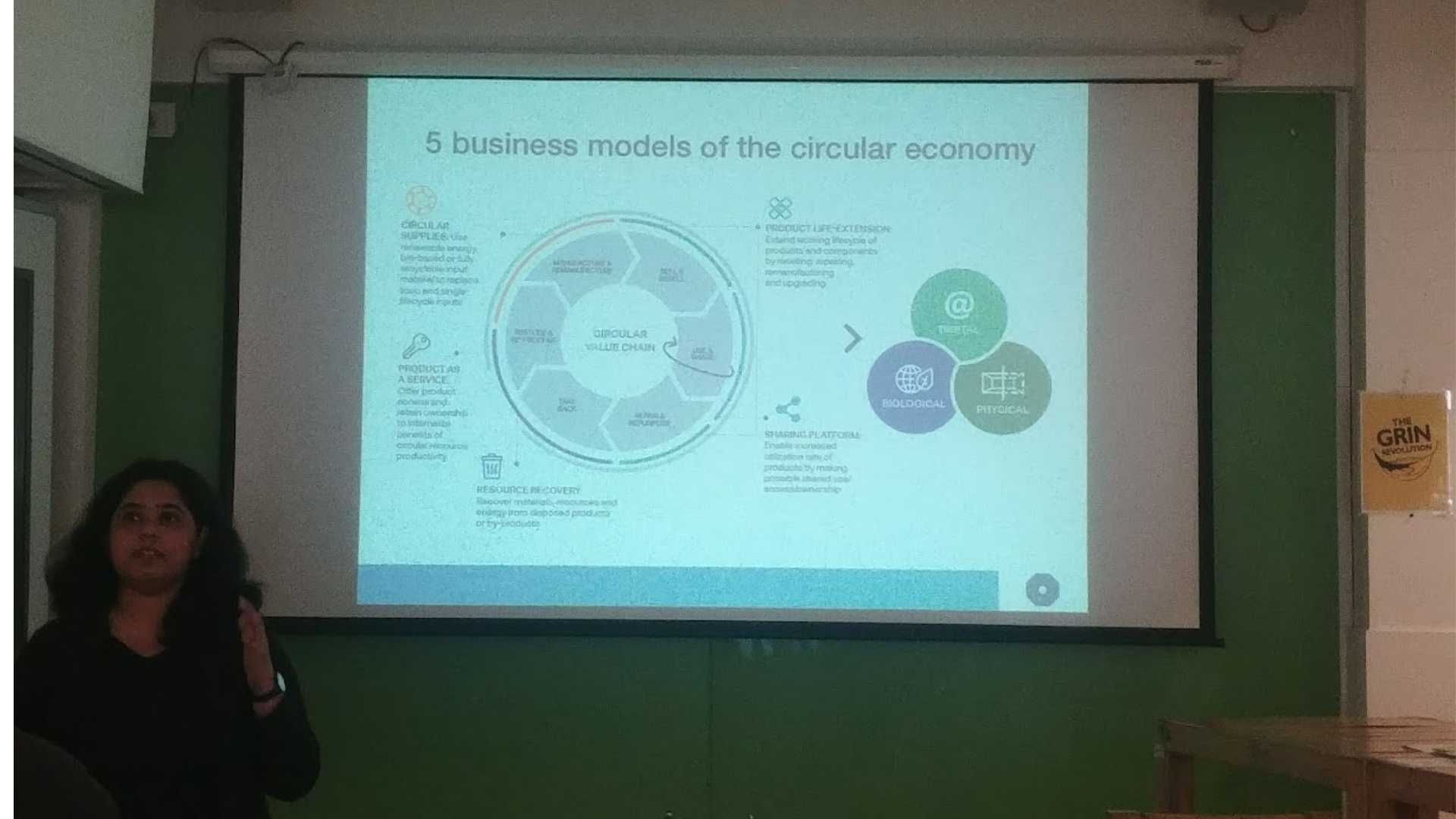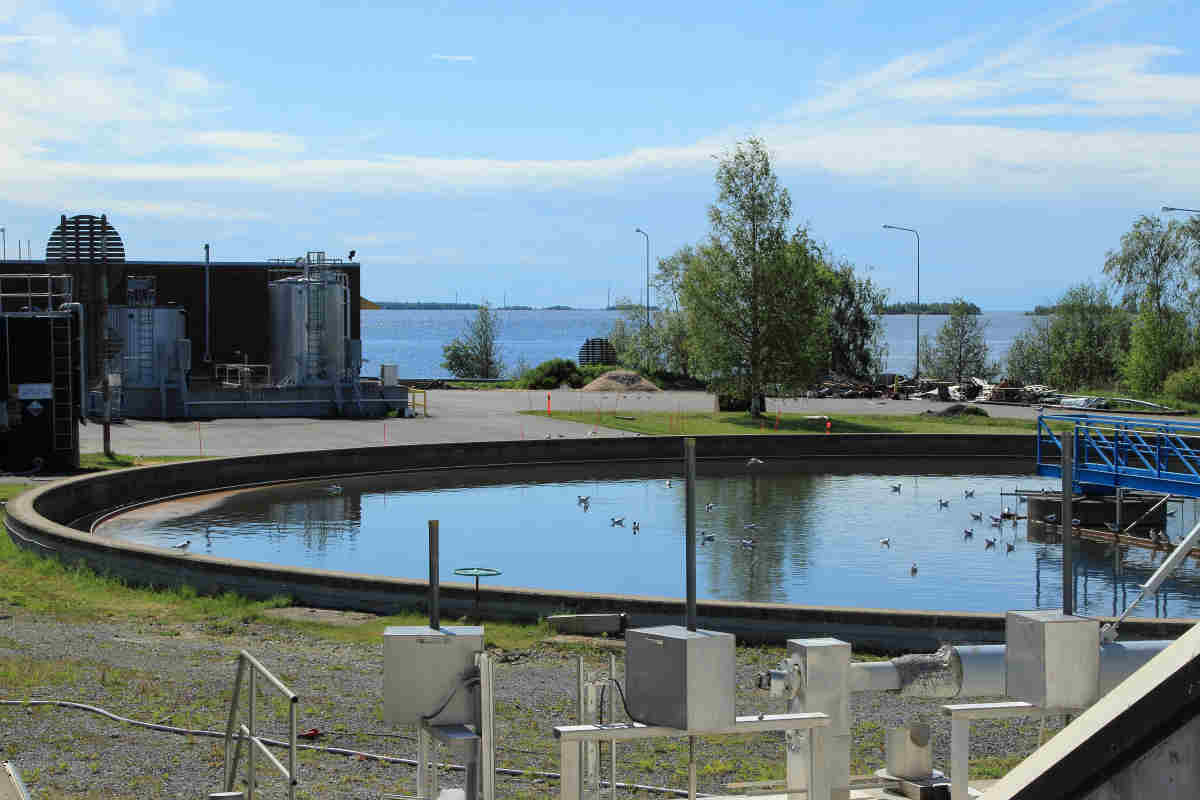The circular economy is an economic model designed to minimize waste and make the most of resources. Unlike the traditional linear economy, which follows a “take, make, dispose” approach, the circular economy promotes a “reduce, reuse, recycle” framework.
This model ensures that materials and products remain in use for as long as possible, extracting their maximum value before safely returning them to the environment or reintegrating them into the production cycle.
In contrast, the linear economy relies on excessive resource extraction, mass production, and high waste generation, leading to environmental degradation and resource depletion.
The circular economy challenges this unsustainable pattern by advocating closed-loop systems, where waste is treated as a valuable resource rather than a burden. For example, innovations such as industrial symbiosis, where waste from one industry serves as raw material for another, exemplify circular principles in action.
Turning waste into wealth is a key driver of sustainability. Waste management through circular models reduces environmental pollution, cuts carbon emissions, and conserves finite natural resources.
According to research by the Ellen MacArthur Foundation, a global shift to circularity could reduce global greenhouse gas emissions by 45% by 2050. Additionally, the World Economic Forum estimates that circular practices could unlock $4.5 trillion in economic benefits by 2030.
Scientific advancements, such as waste-to-energy technologies, biodegradable materials, and AI-driven waste sorting, provide evidence that circular systems are not just theoretical but economically viable and environmentally essential. These research-backed models lay the foundation for a sustainable future, where waste is not an endpoint but a new beginning.
Understanding Waste as a Resource
Waste is often perceived as a burden, but in a circular economy, it is seen as a valuable resource with the potential to be repurposed, recycled, or transformed into new products. Understanding the different types of waste is crucial in developing strategies to convert waste into wealth.
Types of Waste and Their Potential Value
Industrial Waste – Includes byproducts from manufacturing processes, such as metal scraps, chemicals, and textiles. Many industries repurpose these materials; for example, steel manufacturing companies recycle steel scraps to reduce the demand for virgin materials.
Agricultural Waste – Comprises crop residues, animal manure, and food processing leftovers. Studies show that agricultural waste can be converted into biofuels, organic fertilizers, and biodegradable packaging materials.
Electronic Waste (E-waste) – Discarded electronic devices contain valuable metals like gold, silver, and rare earth elements. The United Nations estimates that e-waste contains over $57 billion worth of recoverable materials annually, yet only a small percentage is recycled.
Plastic Waste – One of the most problematic waste streams, with over 300 million tons of plastic produced annually. Advanced recycling methods, such as chemical recycling and bioplastics, offer solutions to turn plastic waste into new materials.
Organic Waste – Includes food scraps and biodegradable materials. Scientific research highlights that organic waste can be composted into nutrient-rich fertilizers or processed into biogas for energy generation.
Scientific Evidence on Waste as a Resource
Research shows that waste contains significant economic and environmental potential. A study published in Nature Sustainability found that industrial symbiosis—where waste from one industry serves as raw material for another—reduces material costs by 30% and carbon emissions by 40%.
Similarly, bioengineering innovations allow for the extraction of valuable compounds from agricultural and organic waste, such as turning coffee waste into biofuels or using fruit peels for biodegradable plastics.
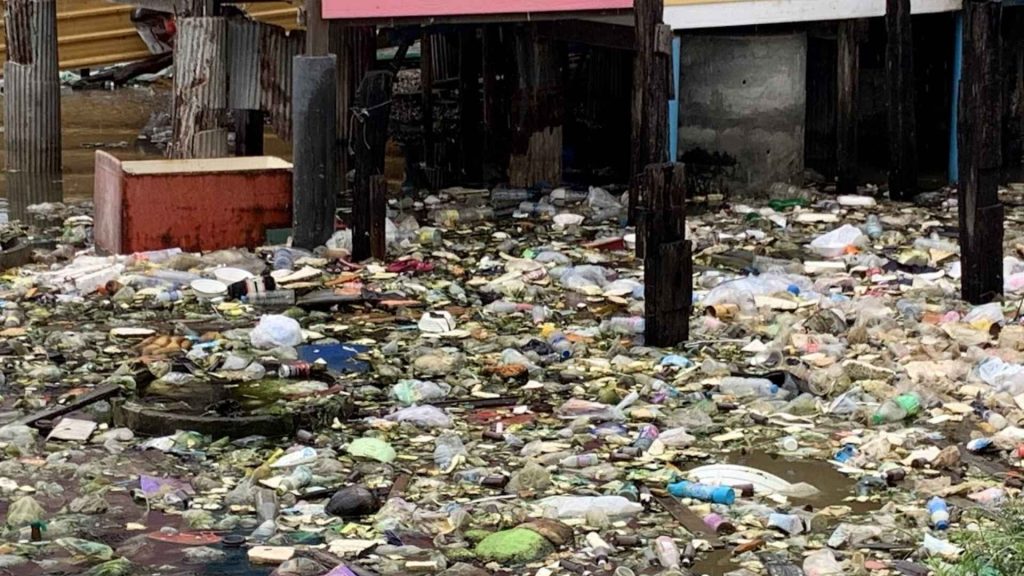
Principles of Circular Economy
The circular economy is built on principles that prioritize sustainability, resource efficiency, and waste minimization. At its core, it seeks to design out waste, keep products and materials in use, and regenerate natural systems. These principles are essential in shifting from a linear “take-make-dispose” model to a regenerative economic system.
Key Pillars of the Circular Economy
Reduce – Minimizing resource consumption and waste generation by designing products with longevity and efficiency in mind. Research suggests that reducing material use in manufacturing can lower carbon emissions by 45% in key industries like construction and automotive.
Reuse – Extending the life cycle of products by repairing, refurbishing, or repurposing them. Studies from the Ellen MacArthur Foundation show that reusing materials can reduce raw material costs by 20-30% for businesses.
Recycle – Converting waste materials into new products to reduce the need for virgin resources. Advanced recycling technologies, such as chemical recycling and AI-powered waste sorting, are improving material recovery rates.
Regenerate – Restoring natural ecosystems by adopting sustainable agricultural practices, replenishing soil health, and promoting biodiversity. Research shows that regenerative agriculture can increase soil carbon sequestration by 15-20%, enhancing food security and reducing environmental impact.
Cradle-to-Cradle Design and Biomimicry
Cradle-to-Cradle (C2C) Design – This approach ensures that materials are continuously repurposed without waste. Products are designed with biodegradability and recyclability in mind, allowing them to safely return to nature or be transformed into new products.
Biomimicry – Nature-inspired design that mimics biological processes to create sustainable materials and systems. For example, biodegradable plastics made from shrimp shells or self-cleaning surfaces inspired by lotus leaves demonstrate biomimicry’s potential in circular economy models.
Research-Based Benefits of a Circular Economy
Scientific studies confirm that transitioning to a circular economy leads to economic, environmental, and social benefits:
A 2021 study by the World Economic Forum found that circular strategies could unlock $4.5 trillion in economic value by 2030 through cost savings, job creation, and innovation.
The European Commission reports that circular practices could reduce global greenhouse gas emissions by 39% by 2050, significantly mitigating climate change.
The UN Environment Programme (UNEP) states that circular models could cut raw material use by 28% globally, reducing environmental degradation.
By implementing these principles, businesses, governments, and consumers can drive sustainable growth while preserving natural resources for future generations.
Technologies Enabling Waste-to-Wealth Transformation
Technological advancements play a crucial role in transforming waste into valuable resources, making circular economy models more efficient and scalable. From next-generation recycling techniques to AI-driven waste management and biotechnology innovations, these technologies are reshaping how we perceive and utilize waste.
Advances in Recycling and Upcycling Technologies
Traditional recycling methods often face inefficiencies due to material contamination and limited recovery rates. However, new technologies are improving recycling processes:
Chemical Recycling – Unlike conventional mechanical recycling, which degrades plastic quality, chemical recycling breaks down plastics into their molecular components, allowing for infinite recyclability. Studies show that chemical recycling can recover up to 90% of plastic waste, reducing dependency on virgin materials.
Upcycling Innovations – Upcycling goes beyond recycling by transforming waste into higher-value products. Examples include turning textile waste into high-performance fabrics or converting used coffee grounds into biofuels and cosmetics.
AI and Blockchain for Waste Management Efficiency
AI-Powered Waste Sorting – Machine learning and robotics are revolutionizing waste separation by using computer vision and sensors to classify and sort materials with 99% accuracy, increasing recycling rates and reducing landfill dependency.
Blockchain for Waste Traceability – Blockchain technology ensures transparent tracking of waste streams, preventing illegal dumping and promoting responsible recycling practices. The Plastic Bank initiative uses blockchain to reward individuals for collecting plastic waste, which is then recycled into new products.
Innovations in Bioengineering: Bioplastics and Waste-to-Energy Conversion
Bioplastics – Made from renewable sources like corn starch, algae, or agricultural waste, bioplastics offer a sustainable alternative to petroleum-based plastics. Research from the Journal of Cleaner Production found that bioplastics reduce carbon emissions by 75% compared to traditional plastics.
Waste-to-Energy (WTE) Technologies – Modern WTE plants use anaerobic digestion, gasification, and pyrolysis to convert organic and industrial waste into biofuels, electricity, and heat. Sweden’s WTE infrastructure processes nearly 50% of municipal waste into energy, reducing landfill dependency.
Scientific Findings on Material Recovery and Closed-Loop Systems
A 2022 study in Nature Sustainability highlights that closed-loop recycling systems can reduce resource extraction by 40%, preserving finite materials and mitigating environmental damage. By integrating circular design principles, advanced recycling, AI, and biotechnology, industries can maximize resource efficiency while minimizing waste, paving the way for a truly sustainable economy.
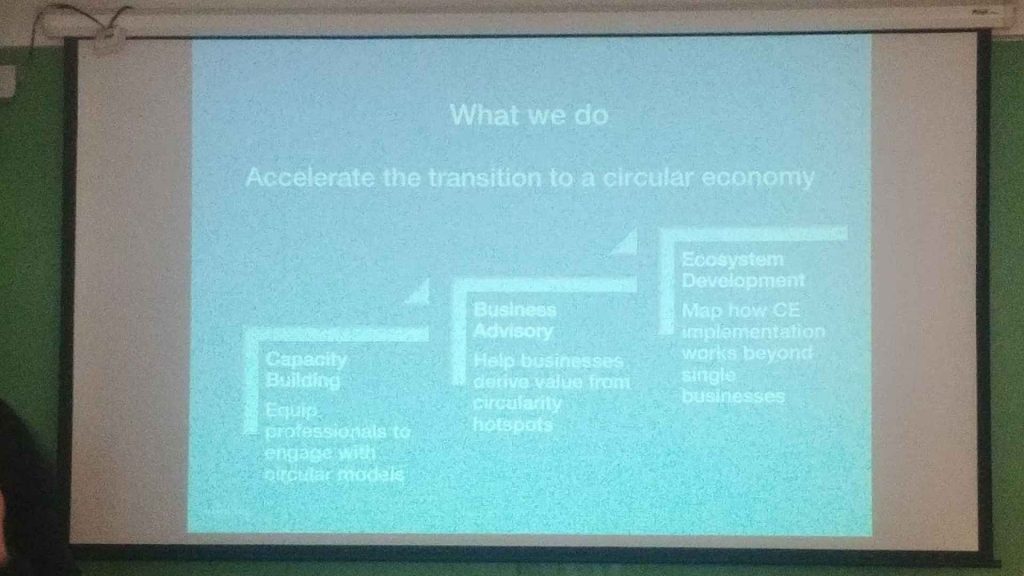
Economic and Social Benefits of Circular Economy Models
Adopting circular economy models offers significant economic, social, and environmental advantages, making them a viable alternative to traditional linear economic systems. From job creation and cost savings to reducing carbon footprints and waste pollution, circular systems contribute to long-term sustainability and economic resilience.
Job Creation and Economic Growth
Transitioning to a circular economy stimulates new industries and employment opportunities. According to a 2021 report by the International Labour Organization (ILO), circular economy models could create over 7 million new jobs by 2030, particularly in recycling, repair, remanufacturing, and green technology sectors. Key areas of job growth include:
Waste management and material recovery – The rise of AI-driven sorting and chemical recycling has increased demand for skilled workers.
Repair and refurbishment industries – Circular business models such as electronics refurbishment and clothing repair services are expanding employment opportunities.
Sustainable manufacturing and bioengineering – The production of biodegradable materials, biofuels, and upcycled products has led to the emergence of innovative startups.
Cost Savings for Businesses and Governments
Circular practices help businesses reduce costs by minimizing raw material consumption and extending product life cycles. A 2022 study by the Ellen MacArthur Foundation found that companies adopting circular strategies saved up to 20-30% in material costs.
Manufacturing sector – Car manufacturers like Renault and Volvo have adopted remanufacturing strategies, reducing production costs by up to 50%.
Food industry – Retailers implementing food waste reduction technologies have cut inventory losses by 35%, improving profitability.
Government waste management – Cities investing in waste-to-energy (WTE) plants significantly reduce landfill costs. Sweden, for instance, has virtually eliminated landfills by converting municipal waste into energy.
Environmental Impact: Reducing Carbon Footprints and Pollution
Circular models directly contribute to lowering global emissions and reducing waste pollution:
The European Environment Agency (EEA) reports that circular economy strategies could cut greenhouse gas emissions by 39% by 2050.
Recycling and upcycling reduce dependency on virgin resources, conserving energy. For instance, recycling aluminum saves 95% of the energy needed to produce it from raw materials.
Circular packaging, such as biodegradable alternatives and reusable containers, reduces plastic waste pollution. Loop, a global reuse platform, partners with brands to provide reusable packaging, significantly cutting single-use plastic consumption.
Real-World Examples from Industry Leaders
IKEA – The company has adopted a “buy-back and resell” program, allowing customers to return used furniture for refurbishment and resale.
Patagonia – Through its Worn Wear program, Patagonia repairs and resells used apparel, reducing textile waste.
Unilever – The company has committed to a 100% recyclable packaging strategy, preventing thousands of tons of plastic from entering landfills.
By integrating circular economy models, industries, governments, and consumers can achieve economic prosperity while preserving natural resources for future generations.
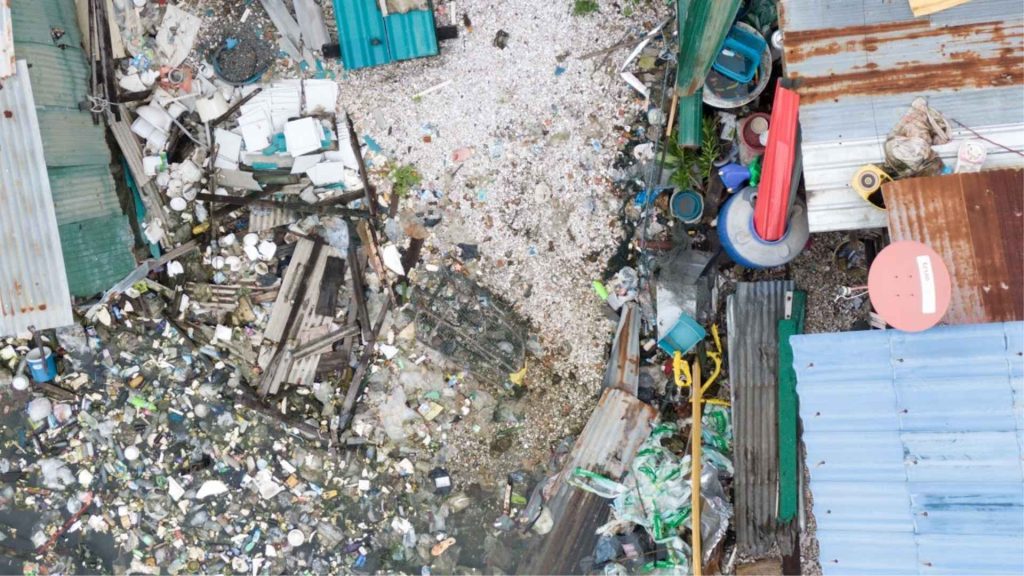
Case Studies of Earth5R: Transforming Waste into Wealth through Circular Economy Models
Earth5R, a UNESCO-recognized global environmental organization, has been at the forefront of implementing circular economy models to promote sustainability and community development. Through various initiatives, Earth5R has demonstrated the practical application of turning waste into wealth, thereby fostering environmental conservation and economic growth. Below are detailed case studies highlighting some of their significant projects.
Waste Management and Circular Economy Training in Mumbai
Mumbai, with a population exceeding 20 million, faces significant challenges in waste segregation and processing. To address this, Earth5R initiated a Waste Management and Circular Economy Program focused on community training.
The organization adopted a demonstration-based training method, providing practical examples to enhance learning experiences. For instance, volunteers used samples of compost to educate locals on converting kitchen waste into valuable biofertilizer, thereby reducing household waste. Additionally, the program included “Circular Economy for Livelihood Training,” where volunteers assisted local women in creating marketable items from recyclable materials.
This initiative not only promoted environmental sustainability but also empowered communities economically. To date, over 5,000 families have been trained, contributing to a circular economy valued at over $6.5 million.
Mula Mutha River Cleanup and Community Engagement in Pune
The Mula Mutha River in Pune had suffered extensive pollution due to improper waste disposal. Earth5R launched a comprehensive river cleanup initiative that combined waste collection with community engagement.
Drawing inspiration from tribal traditions, the program incorporated cultural activities such as football, fostering a sense of ownership over public spaces. Over six years, with 30-40 volunteers participating each Sunday, the initiative achieved remarkable outcomes:
Total Waste Collected: Approximately 112.32 tonnes of waste were removed from the riverbanks.
Carbon Offset: Recycling the collected waste prevented an estimated 150.52 tonnes of CO₂ emissions.
Economic Impact: The recycling efforts generated approximately ₹561,600 (₹5.61 lakhs), supporting local waste management and recycling industries.
Volunteer Engagement: The project accumulated around 24,960 volunteer hours, reflecting strong community involvement.
This initiative not only restored the river’s ecosystem but also strengthened community bonds and demonstrated the economic viability of waste-to-wealth strategies.
Sustainable Community Program in Jawahar Nagar, Mumbai
Earth5R implemented the Circular Economy-focused Sustainable Community Program in Jawahar Nagar, Mumbai, aiming to encourage sustainable lifestyles at the individual level within the community.
The program emphasized the economic, social, and environmental benefits of the circular economy, such as innovation, job creation in renewable energy and recycling sectors, reduced unemployment, and improved waste management systems. By educating residents on these aspects, Earth5R fostered a community-driven approach to sustainability, leading to increased resource productivity and resilience.
Transforming Residential Buildings into Zero Waste Entities
Earth5R’s initiatives have led to the transformation of 5,300 residential buildings in India into Zero Waste entities. Through community-based decentralized management programs, approximately 750 tons of plastic waste are collected and recycled each month, and 600 tons of organic waste are processed.
These efforts have positively impacted around 1.5 million families, particularly those at the bottom of the pyramid, showcasing a scalable and sustainable bottom-up approach to the green economy.
Global Environmental Network and Educational Platforms
Earth5R has established a dynamic network of 6.3 million citizens across 65 countries, making it one of the largest environmental networks actively working on climate action. The organization offers a Google award-winning app and an advanced learning management system to help individuals and organizations develop essential green skills and make impactful, sustainable choices.
This global reach and educational focus have been instrumental in driving the shift towards a green economy.
Earth5R’s initiatives exemplify the transformative potential of circular economy models in addressing environmental challenges and promoting sustainable development. By focusing on community engagement, practical training, and innovative waste management strategies, Earth5R has effectively turned waste into wealth, empowered local communities, and contributed to environmental conservation.
These case studies serve as inspiring examples for other organizations and communities aiming to implement circular economy principles for a sustainable future.
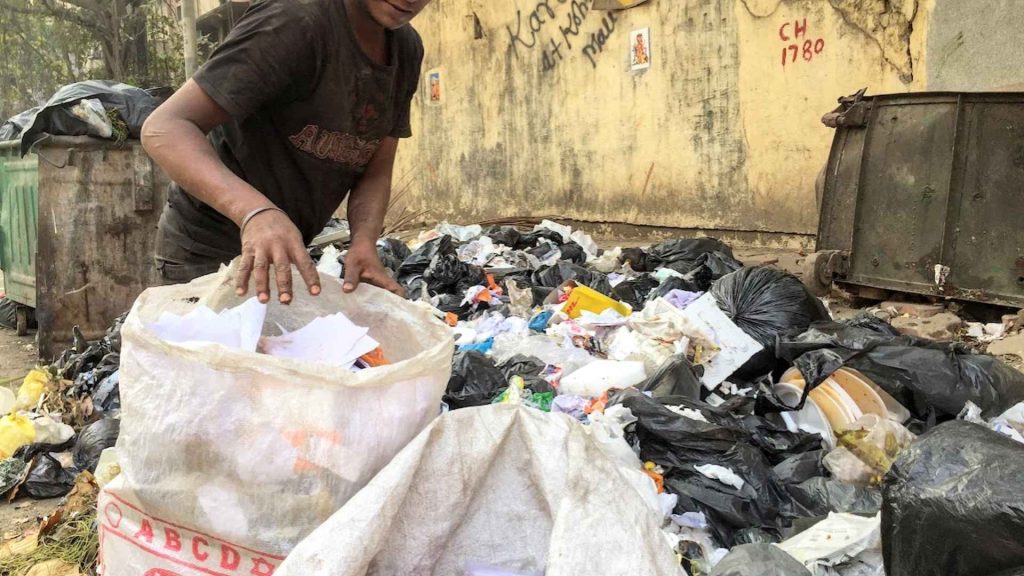
Policy and Regulatory Frameworks for a Circular Economy
Government policies and regulatory frameworks play a crucial role in accelerating the transition to a circular economy. By implementing legislation, incentives, and global agreements, policymakers create the conditions for sustainable business practices, waste reduction, and resource efficiency.
Role of Government Policies in Enabling Circular Practices
Governments worldwide are enacting laws and incentives to support circular economic models. Some key policy measures include:
Extended Producer Responsibility (EPR) – Requires manufacturers to take responsibility for the end-of-life disposal of their products. The EU’s Waste Electrical and Electronic Equipment (WEEE) Directive mandates e-waste recycling and recovery targets.
Tax Incentives for Circular Businesses – Some governments offer tax reductions and subsidies to companies using recycled materials or engaging in sustainable production. For instance, the Netherlands provides tax benefits for circular business investments.
Bans on Single-Use Plastics – More than 70 countries have imposed restrictions or bans on single-use plastics, pushing industries to develop alternative packaging solutions.
International Agreements and Sustainability Goals
Global organizations and frameworks set ambitious targets to drive circularity on a larger scale:
EU Green Deal – The European Union aims to achieve a fully circular economy by 2050 through policies such as the Circular Economy Action Plan (CEAP), which promotes sustainable product design and waste reduction.
United Nations Sustainable Development Goals (UN SDGs) – Goals 12 (Responsible Consumption and Production) and 13 (Climate Action) emphasize the need for circular practices to combat climate change and resource depletion.
Basel Convention (Amendments on Plastic Waste) – Strengthens global regulations on plastic waste trade, ensuring environmentally sound disposal and recycling.
Case Studies of Effective Policies Around the World
Sweden’s Waste-to-Energy Policy – Sweden recycles or incinerates 99% of its municipal waste to generate district heating and electricity. The government provides financial incentives for waste-to-energy plants.
Japan’s Circular Economy Strategy – Japan’s Sound Material-Cycle Society Plan has led to an 84% recycling rate for plastic bottles and the efficient repurposing of e-waste into new electronics.
China’s Circular Economy Promotion Law – This policy encourages businesses to adopt industrial symbiosis by reusing waste materials across industries. As a result, China has significantly reduced raw material dependency in manufacturing.
Effective policies and global cooperation are key to scaling circular economy solutions, ensuring sustainable resource management and economic resilience worldwide.
Embracing Circularity: The Path to a Sustainable and Prosperous Future
The transition to a circular economy represents a fundamental shift in how societies produce, consume, and manage resources. By reimagining waste as a valuable asset, businesses, governments, and individuals can drive economic growth, reduce environmental harm, and promote long-term sustainability.
Key Takeaways
Understanding Waste as a Resource – Waste is not an endpoint but a potential raw material for new products, energy, and bio-based innovations. Case studies from Sweden, Japan, and leading corporations show that effective waste utilization leads to economic and environmental benefits.
Principles of Circular Economy – The four pillars—Reduce, Reuse, Recycle, and Regenerate—offer a framework for minimizing resource extraction and maximizing product life cycles. Concepts like Cradle-to-Cradle design and biomimicry demonstrate nature-inspired solutions for sustainable manufacturing.
Technological Innovations – Advances in AI, blockchain, bioengineering, and waste-to-energy technologies are making circular systems more efficient and scalable. Research indicates that circular models can reduce greenhouse gas emissions by 39% by 2050.
Economic and Social Benefits – Circular models create millions of jobs, lower costs for businesses, and enhance environmental sustainability. Companies like Patagonia, IKEA, and Unilever are already leading the shift, demonstrating that circularity is both profitable and sustainable.
Policy and Regulatory Frameworks – Governments play a critical role through EPR laws, tax incentives, and international agreements such as the EU Green Deal and UN SDGs, setting the stage for large-scale circular transitions.
Future Innovations in Waste-to-Wealth Strategies
Looking ahead, emerging technologies and research-driven innovations will further enhance circular economy solutions:
Next-generation recycling – AI-driven material recovery and chemical recycling breakthroughs will improve efficiency and scalability.
Bio-based materials – Advancements in biodegradable plastics, mycelium packaging, and algae-based textiles will reduce dependency on fossil fuels.
Urban mining – The extraction of valuable metals from e-waste could significantly reduce reliance on raw material mining.
FAQs on “Turning Waste into Wealth – Building Circular Economy Models”
What is a circular economy?
A circular economy is an economic system that focuses on minimizing waste and making the most of resources by designing products for reuse, repair, recycling, and regeneration.
How does a circular economy differ from a linear economy?
A linear economy follows a “take-make-dispose” model, leading to resource depletion and waste, whereas a circular economy keeps materials in use for as long as possible.
Why is turning waste into wealth important?
It helps reduce pollution, conserves natural resources, creates economic opportunities, and contributes to sustainability.
What types of waste can be converted into valuable resources?
Industrial waste, agricultural waste, electronic waste (e-waste), plastic waste, organic waste, and construction waste can all be repurposed.
What are some successful case studies of waste-to-wealth transformation?
Sweden converts almost all its municipal waste into energy.
Japan’s recycling laws enable high recovery rates for plastics and metals.
Companies like Adidas use ocean plastic to manufacture eco-friendly shoes.
What are the key principles of the circular economy?
Reduce, Reuse, Recycle, and Regenerate form the foundation of circular economy models.
What is Cradle-to-Cradle design?
A design philosophy where products are created with materials that can be safely reused, recycled, or biodegraded.
How do AI and blockchain contribute to waste management?
AI improves waste sorting, while blockchain ensures transparency in waste traceability and recycling efforts.
What are some innovative technologies used in circular economy models?
Chemical recycling for plastics
Waste-to-energy conversion using anaerobic digestion
Bioplastics made from renewable resources
How does a circular economy create jobs?
It generates employment in waste management, recycling, refurbishing, and sustainable manufacturing industries.
What economic benefits do businesses gain from circular models?
Companies save costs by reducing raw material use, lowering waste disposal fees, and creating new revenue streams from recycled products.
How does the circular economy help the environment?
It reduces carbon emissions, decreases pollution, conserves water, and minimizes landfill waste.
What role do governments play in supporting circular economy models?
Governments set regulations, offer tax incentives, and implement policies like Extended Producer Responsibility (EPR) to promote circularity.
What international agreements support circular economy principles?
EU Green Deal
UN Sustainable Development Goals (SDGs)
Basel Convention on Plastic Waste
Which countries have the most successful circular economy policies?
Sweden (waste-to-energy policies)
Japan (high recycling efficiency)
The Netherlands (circular business tax benefits)
What are the biggest challenges in transitioning to a circular economy?
High initial costs for businesses
Lack of consumer awareness
Inadequate waste collection infrastructure
How can businesses overcome barriers to circularity?
By adopting sustainable product designs, investing in recycling innovations, and collaborating with governments for policy support.
What are future innovations in waste-to-wealth strategies?
Advanced urban mining for e-waste recycling
AI-driven smart waste sorting
Mycelium-based biodegradable packaging
How can individuals contribute to a circular economy?
By reducing single-use plastics, supporting sustainable brands, repairing and reusing items, and participating in recycling programs.
What is the long-term impact of circular economy adoption?
A sustainable global economy with reduced waste, increased efficiency, economic growth, and environmental restoration.
Call to Action for Policymakers, Businesses, and Consumers
Policymakers must implement stronger waste management regulations, invest in circular infrastructure, and promote research into sustainable materials.
Businesses should prioritize eco-friendly product design, closed-loop manufacturing, and waste reduction initiatives.
Consumers play a crucial role by adopting sustainable habits, supporting brands with circular practices, and demanding policy changes.
By embracing circular economy models, societies can turn waste into wealth, drive innovation, and build a sustainable future for generations to come.
~Authored by Ameya Satam

